We’re diving headfirst into deep waters here — but it should be good for the soul. The question is, just what is the best camera for street photography? Traditionalists tend to favour Leica rangefinders with a cooking 35mm Summicron aboard. They see it as the benchmark. They could be right. But I have some alternative views.
Many photographers have a thing about the Fuji X100 series; others still cleave to the defunct-but-still-competitive Leica X1 and X2. Eric Kim is besotted with the Ricoh GR, judging by the number of blog posts he devotes to extolling this paragon of compact form and peerless results.
There are countless other protagonists favouring various cameras and lenses and none of them is without strong views on the matter. In short, deep, but definitely not still waters.

The original 2009 Leica X2 set the trend for simple, fixed-lens compacts. It even preceded the Fuji X100 which gained a lot more attention. The X1 provides simple physical controls and is ideal for street photography. 
Fuji’s X100 series became the darling of the street photography. Like the X1, it provides sensible physical controls, a fixed 35mm-equivalent lens.
Let’s face it, though, any camera will suffice for street photography which, in its loosest definition, is the sort of everyday snapping we indulge in almost anywhere, especially when travelling to new places.
There’s a good case to be made for the smartphone to fill this need, of course. It is perhaps the ultimate stealth camera for unobtrusive street photography because almost everyone is seen clutching a phone.
You get noticed these days only if you don’t have a smartphone in front of your face or are not walking zombie-like while texting on the go
Ideals
What, though, are the ideal parameters for effortless street photography? You may ponder this as you lurk for hours at the top of a spiral staircase waiting for a random cyclist to pass your line of vision. Or, perhaps, muse while loitering next to a puddle expecting some unfortunate to be forced to skip over at any moment. Of such happenings are decisive moments made.
To get the discussion rolling, here are a few desirable ingredients for successful street photography:
- A compact and, therefore, unobtrusive body: This is where huge DSLRs and mirrorless cameras with massive zooms come unstuck. Got to remember not to frighten the horses, you know, Old Chap.
- A slow aperture: For quick-on-the-draw shots with almost everything in focus, you’ll find that f/8 is a good compromise. Brave is the street photographer who uses a Noctilux at f/0.95. A slow lens also brings compactness of form, thus further sanitising your rig.
- Lurking: There’s a tendency to stride down the street, snapping at random. But the best results (so I am told) come from having the patience to lurk, waiting for the haruspex to inspect the entrails. Lurking is a habit most beneficial to street photography and to divining the decisive moment.
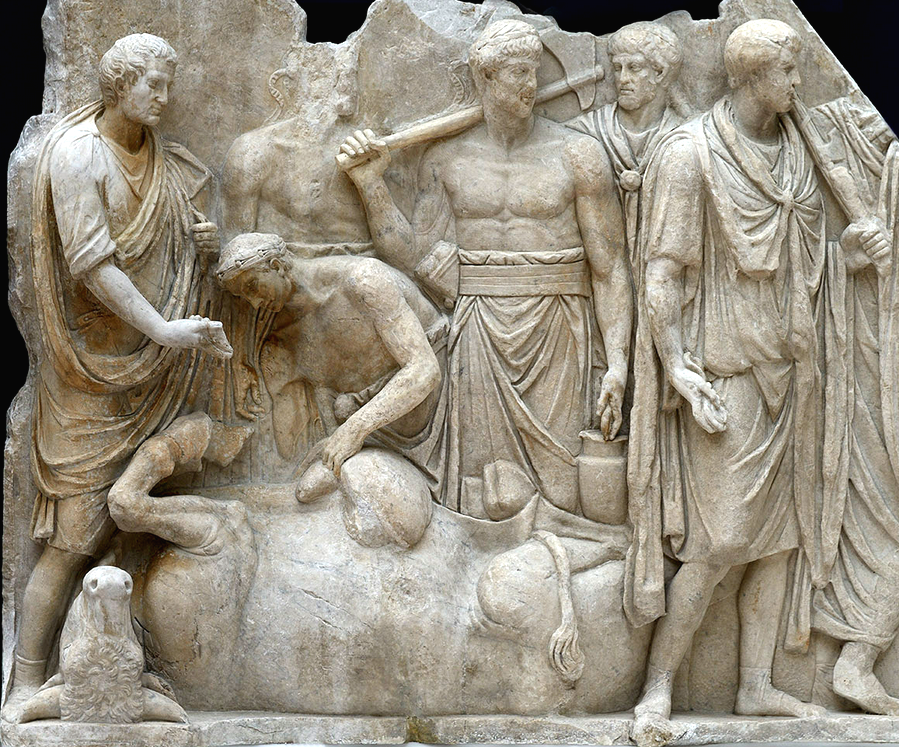
- A widish lens: The masters of the past were seemingly welded to their nifty fifties and I sometimes prefer this angle of view for lurking. But these days the smart money goes on the 35mm or, even, the 28mm focal length. Apart from getting more in the frame at close quarters, the wider lenses have a greater depth of field at any given aperture, thus facilitating that boon of the manual devotee, zone focus. And improvements in sensor performance mean that a post-crop to a 35mm or, even, 50mm equivalence is eminently possible.
- Simplicity: Street photography is not all that demanding on the camera. You don’t need too many bells and whistles. You’re not shooting a football match or practising ornithology. Aperture (f/8 and all that), speed (sufficient to avoid camera shake and blur) and ISO (on the rare occasions you need to fiddle) — these are the only settings you really need consider. Therefore, it’s best to have a simple camera (which is hopefully a small camera), wholly focused on the exposure triangle and not confusing you with unnecessary options.
Difficult choice
Armed with these criteria, which camera and lens should we choose? I’ll approach this again from a Leica point of view.

I’ve enjoyed using the Leica X1 for street photography in the past. It’s small, unobtrusive and simple, with the physical controls that tell you the main settings at a glance. In Australia, I hear, the X1 is worshipped on the altar of minimalism. Aussie aficionados have been known to prostrate themselves before that little camera. The X1 chief priest, aka The Sage of Terrigal, is convincing in his passion.
In common with the Ricoh GR of the Blessed Kim, The X1 has a slowish f/2.8 lens. The Ricoh, though, is a 28mm beast while the little Leicas sport a 35mm-equivalent lens. In the past few years, however, I have come to regard a 28mm-equivalent lens as the ideal. In fixed-lens cameras for general use, this focal length is most notable in the Leica Q and Ricoh GR.
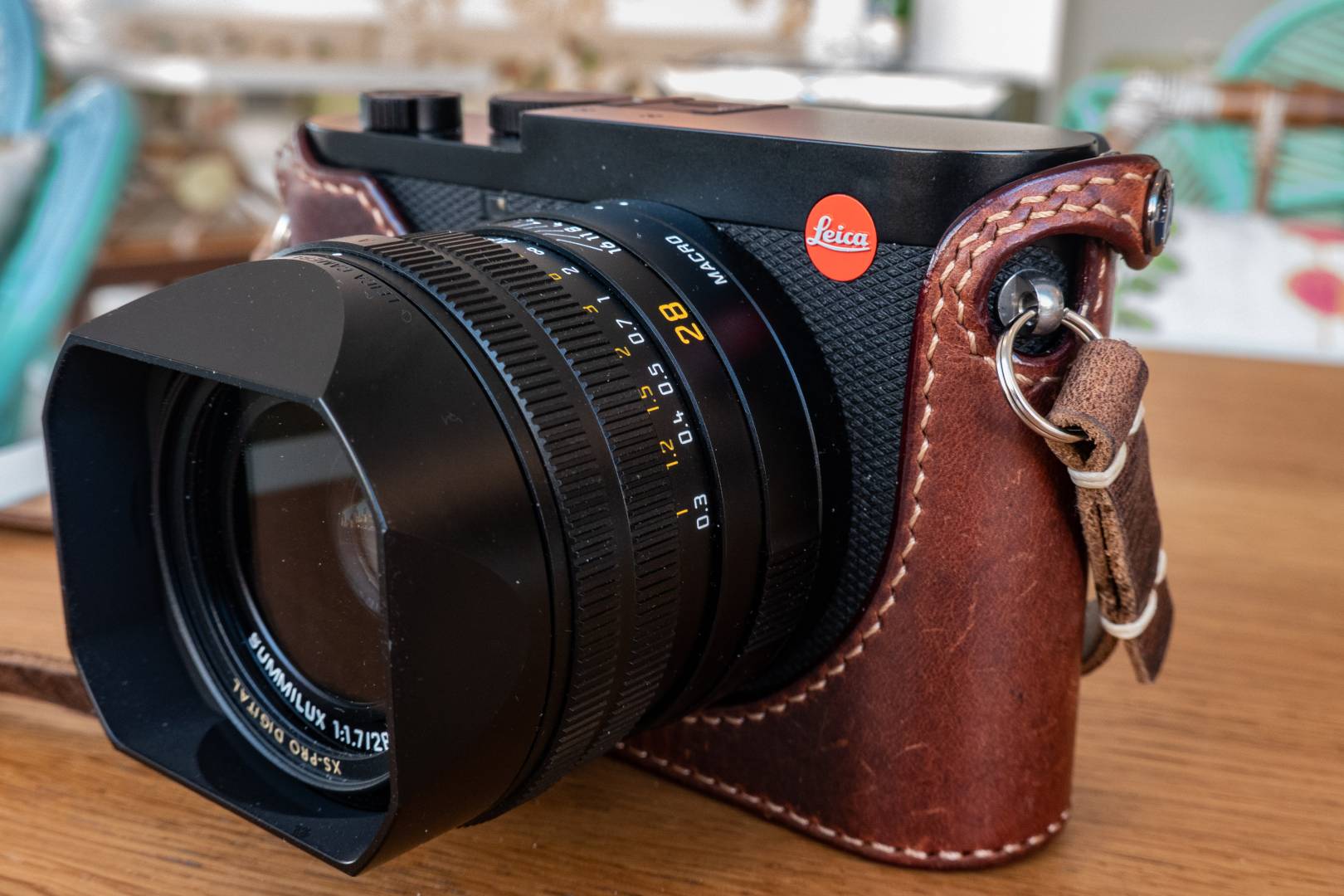
The Ricoh, as Eric keeps pointing out, is a major contender if you want the smallest body, ridiculous unobtrusiveness and a 28mm fixed lens. The Leica Q and Q2 also make very efficient and enjoyable tools for travel and general photography. They join with the Ricoh in allowing a wider 28mm angle of view but, because of the larger sensor, provide a slightly narrower depth of field at any given setting.
You probably won’t be using f/1.7 in the street very much, of course, but it is handy to have it in reserve for gloomy interiors and for when you want to spend time on setting up a shot with a blurry background. However, there is a penalty to be had for this fast option — the lens is bulky and the Q is no shrinking violet, weighing in at just under 800g.
Zone is the quickest focus
Let’s return to the rangefinder which many will claim, with good reason, to be the quintessential street camera. The requirements of street photography are very much in line with the good old-fashioned “Messsucher1”. Zone focus is quicker than autofocus, after all.
We all know that film cameras are enjoying a renaissance, especially among younger photographers who have mostly grown up with digital cameras and smartphones. Film is cute and something different, but it does demand commitment. Shooting film can be expensive, even if you do your own processing, but this cost is largely offset by the cheapness of the equipment. For £50 you can be in business with a good mainstream film camera and lens.
But, for many, a Leica — any Leica —is the holy grail, and with good reason. It is no longer a cheap option, however. These days you will be lucky to buy any M camera for less than £500 unless it is in particularly bad condition.
And the M6 Classic, which is perhaps the first choice among budding street photographers with a bit of dosh, has become almost prohibitively expensive simply because of that popularity. You are now looking at £1,500 to buy a 20- or 30-year-old M6 Classic body.
The later TTL version now commands well over £2,000. Madness or what? That’s some commitment, but it could be your film camera for life. It probably won’t depreciate. On the contrary, it could be that unique thing in photography — an appreciating asset. So buying one isn’t such a mad move after all. You will probably get a better return than you would in interest from a bank in the current climate.

Digital choice
What about Leica M digitals? Among Leica’s ten-year run of full-frame digital rangefinders, there is no doubt that the M10 is the best of the bunch. If for no other reason, it is smaller and more handleable than its predecessors.
However, if you want ultimate simplicity and the ability to concentrate entirely on the job in hand, then the M10’s screenless offspring, the M10-D is probably the ideal street photography tool. Anyway, that’s my story and I’m sticking to it. But which lens to choose? You certainly don’t need a fast lens, so the 28mm Elmarit or 35mm Summicron fit the bill admirably. There’s even something even more appropriate available — small, very light and very cute.
Perhaps the most important aspect to consider is the
Toy-camera lens
Recently I’ve had the chance to try one of Leica’s most oddball lenses, the retro 28mm f/5.6 Summaron-M. In terms of size (2cm deep), weight (165g), aperture range (f/5.6-22) and toy-lens unobtrusiveness, the Summaron ticks all the boxes for street photography. With the M10-D, my camera of choice, the rig is very stable and handleable; you can almost forget there is a lens attached.

This virtuous paragon of essential photography does weigh 90g more than the Q2 but, frankly, this isn’t noticeable. Subjectively, it feels slightly lighter and is certainly less bulky. And that tiny pancake of a lens is a delight, just perfect for a stroll down the street.
You could almost describe this rig as pocketable. You’ll need a fairly big pocket, of course, but it is slimmer than the same camera with a 35mm Summicron or, even, a 28mm Elmarit attached. It certainly slips easily into the side pocket of my Barbour jacket.
Alternatives
When it comes to usability, the 28mm f/2.8 Elmarit will do the job just as well (slightly better in terms of sharpness and with a more modern render, if that’s what you desire) but it isn’t quite as small as the Summaron. And it’s no hardship to trade a couple of stops for the admittedly modest saving in weight and bulk.
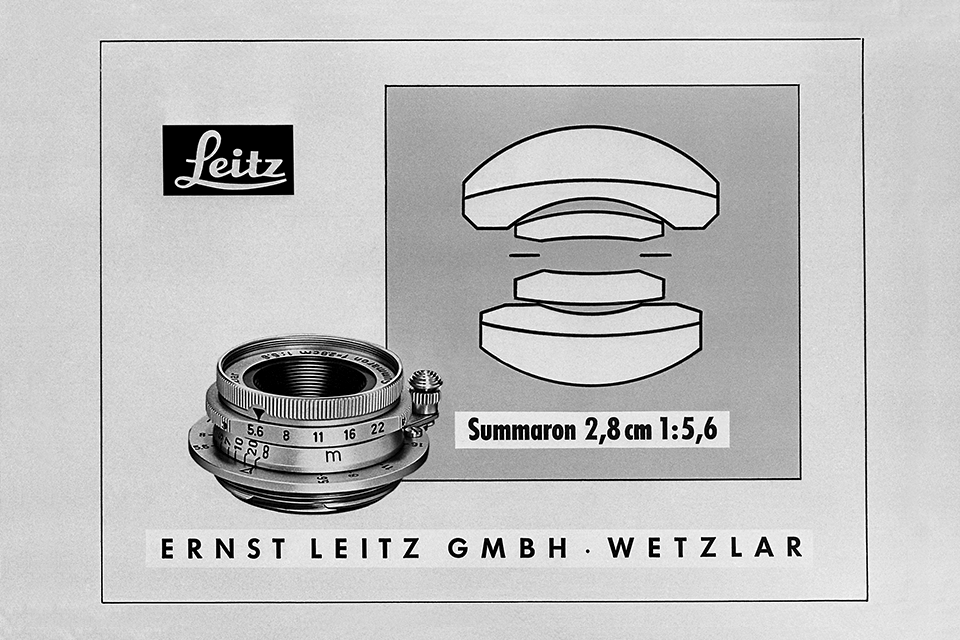
The new Summaron f/5.6 is a remake of the classic 1950s lens of the same specification but brought up to date with modern optical coatings:
The optical design of 6 elements in 4 groups arranged symmetrically around the iris of the Leica Summaron-M 28 mm f/5.6 is identical to that of its ancestor. In contrast to the legendary classic, the new model features an M-bayonet mount with 6-bit coding to enable communication between the lens and the camera. (Leica brochure)
The Summaron does have a few quirks apart from its slow aperture (which can be seen as a virtue on the tools-for-the-job scale). As a vintage design, it has a minimum focus distance of 100cm — although no M rangefinder lens focuses closer than 70cm and some expensive bits of kit, such as the 50mm Noctilux, have a similar 100cm minimum.
The latest 75mm Noctilux has an 85cm minimum. On the Summaron, the one-meter minimum standoff has a benefit, since you are not tempted to get closer to your main subject, a useful point to bear in mind if you are relying on zone focus.

Not everyone will like the focus ring which is so narrow and recessed that it cannot be gripped in the normal way. Instead, you must focus by means of the handle or tab. I’m not quite sure what to call it. The ring locks at infinity — a common feature of vintage lenses — and must be released by a press of the little handle. It has a very long throw compared with modern M lenses.
In most respects, however, worrying about the usability of the focus ring is entirely academic. You don’t need to engage much with the controls on this lens. Set it and leave it is the motto du jour. Think of the Summaron as the zone-focus king.

Smooth and precise
The smooth aperture ring operates in five clear stops between f/5.6 and f/22; no half or third stops but such would be wholly unnecessary on this lens. It has a fairly free movement but the stops are precise and help avoid miss-settings during handling. The focus ring is also smooth but fairly loose and you have to make sure it isn’t knocked out of kilter, particularly because you seldom need to check it and it can be easy to overlook.
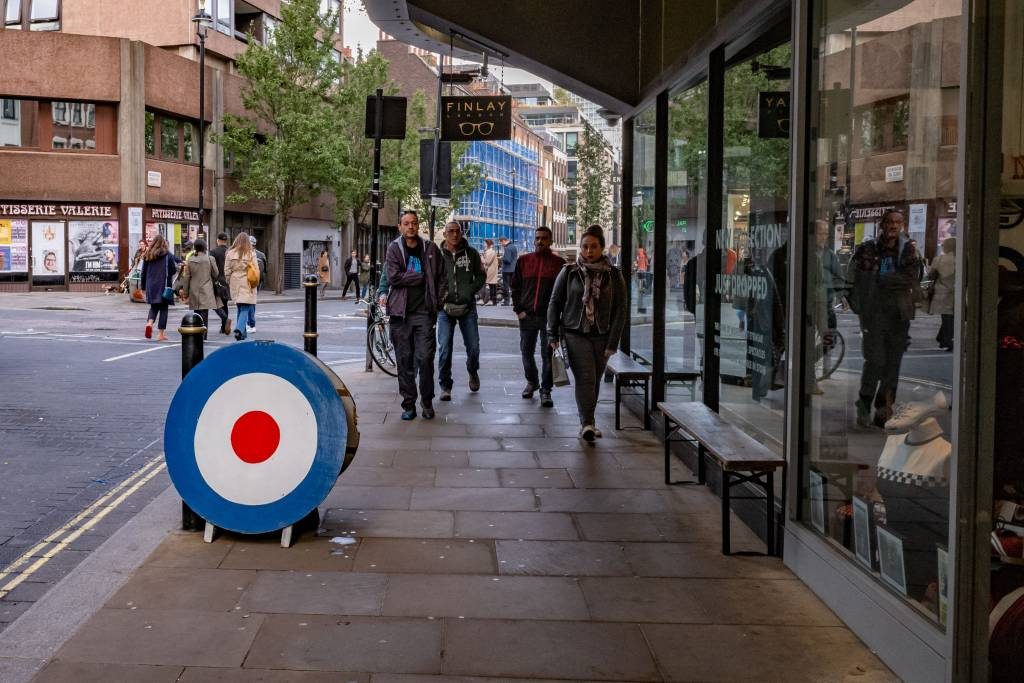
For optimum efficiency, I prefer to set the aperture to f/8 at a focal distance of 2.5m. This means that anything from 1.75m to infinity should be in focus. If you do intend to get a bit closer, set the lens to 2m and you will have everything from 1m to infinity in focus. It depends on your method and, of course, on the light available.
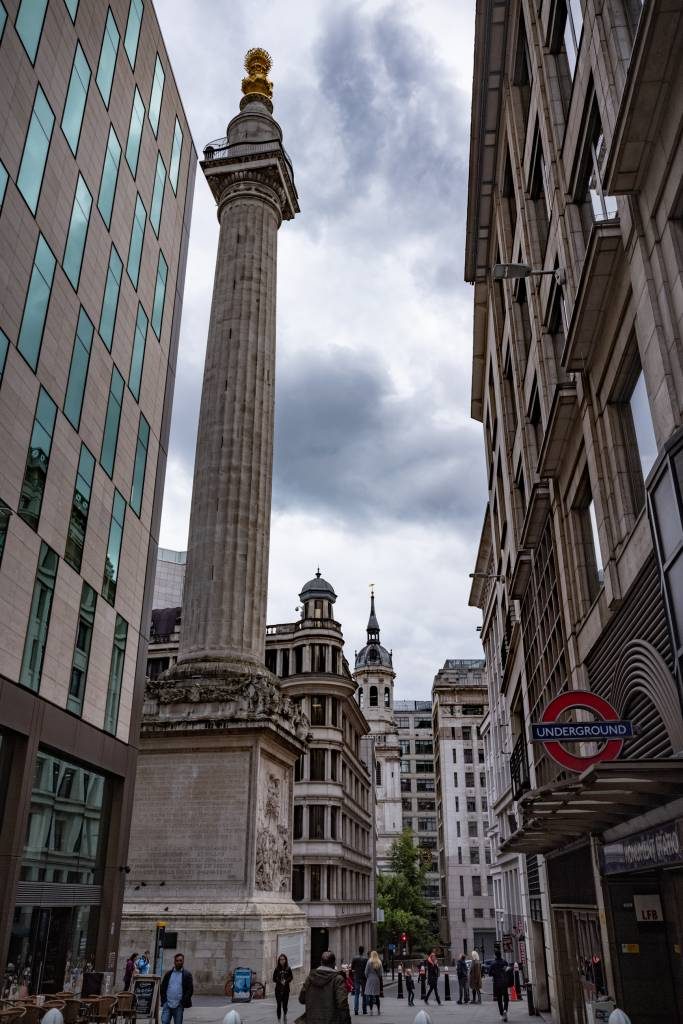
Playing with ISO
In respect of light gathering, however, things have changed a lot since the original f/5.6 Summaron was introduced in the early fifties. ISO performance of modern cameras is infinitely better than that of film. Even that f/5.6 can be used effectively in low light conditions. I have the M10-D set to max out at 12,500 ISO and indoor results at this sensitivity are quite acceptable, if not brilliant.
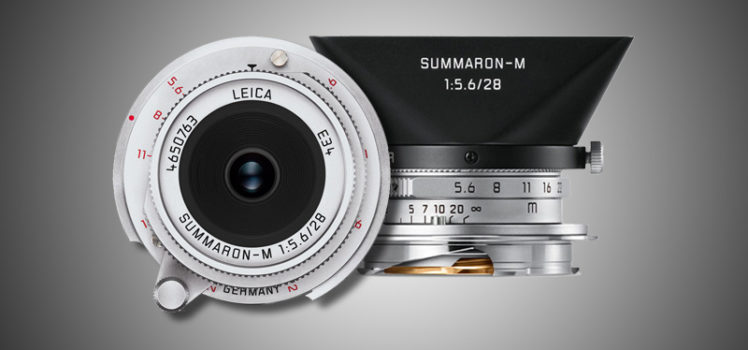
I suppose, also, that not everyone will take to the rather magnificent brass vintage hood which looks very much like the scoop of a grain silo. The hood dwarfs the lens, but I prefer to shoot without it because it entirely removes the advantage of having such a compact lens.
Modern touches
Although this is a 1950s design writ new, it does bring some modern touches such as multi-coating and six-bit coding (and, of course, the M bayonet because the original was LTM only). It remains a vintage lens in rendering, however, and does exhibit relative softness and some vignetting throughout the aperture range, more so at f/5.6 understandably.
Actually, I quite like this softer render and it is no reason to shun the Summaron.

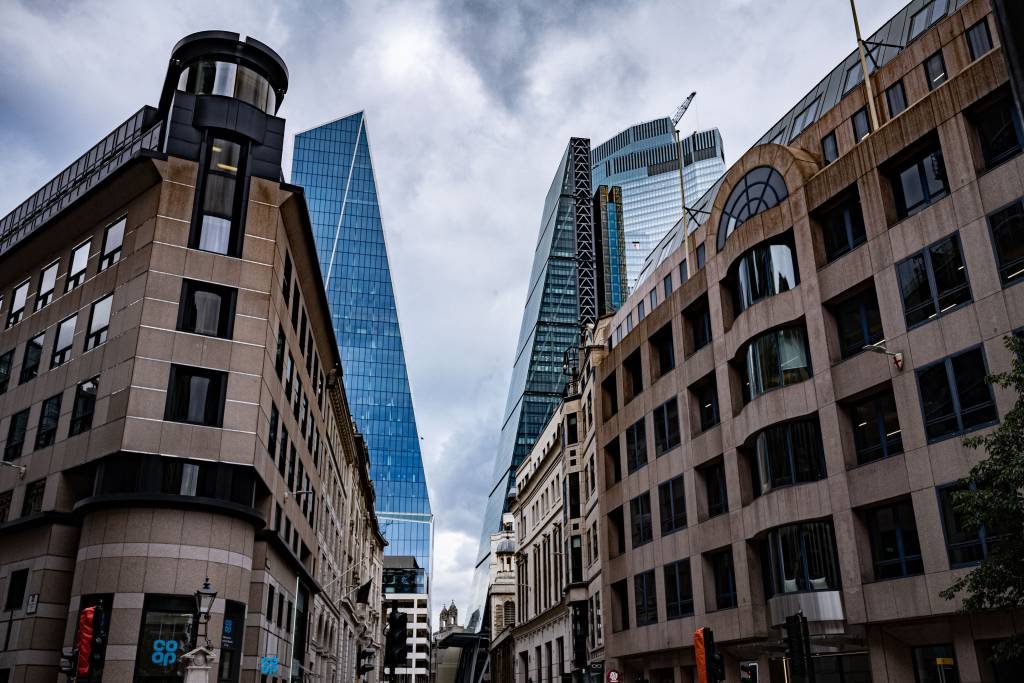
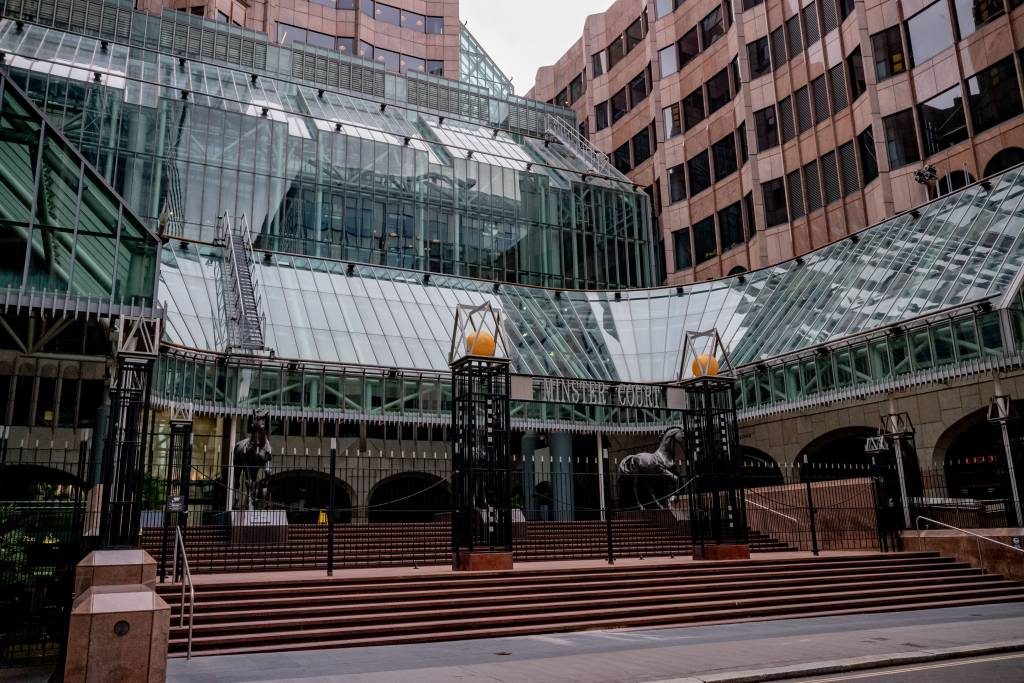


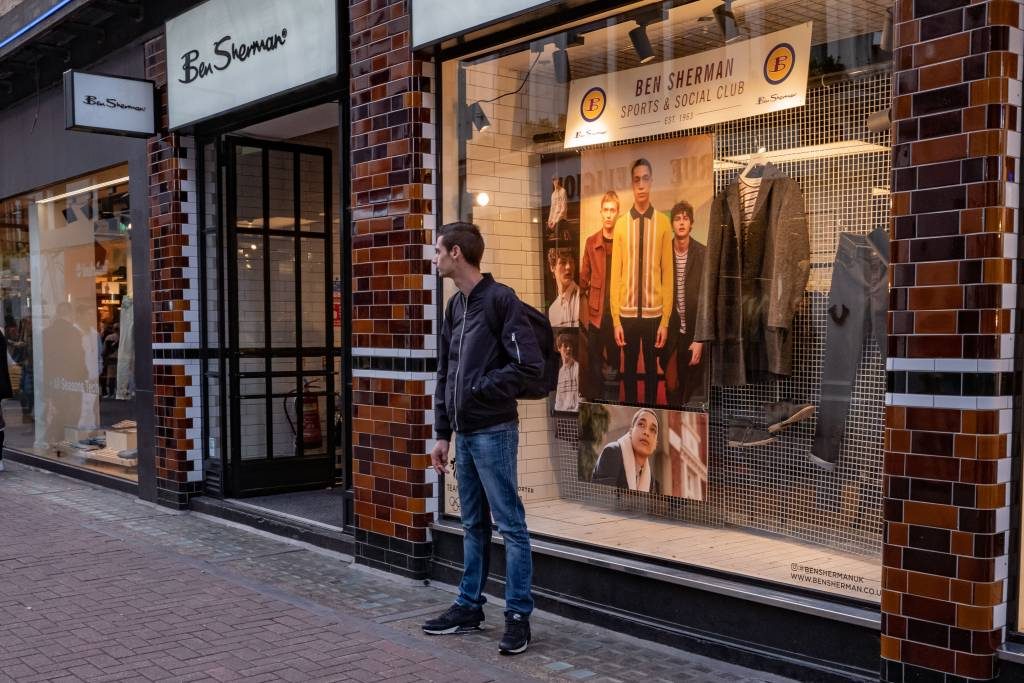

The combination of the M10-D and f/5.6 Summaron is perfect for street shots. Just aim the camera and press the button. Focus guaranteed, every time, no messing about
The Summaron has an enormous depth of field, even when wide open. You wouldn’t choose this lens to demonstrate bokeh. It is modest, to say the least. But don’t think it is any better than any other 28mm lens in this respect — you will get a similar depth of field at any aperture from f/5.6 or smaller with any lens full-frame 28mm, including the Elmarit and 28mm Summilux. Crop-sensor lenses such as those for APS-C or micro four-thirds offer an even wider depth of field at a given setting.

But the beauty of the Summaron is that the design is pared down to the ideal aperture range for street photography and that results in its economy of scale. if you don’t need f/4 or wider, why bother with a faster lens? This is a specific tool for a specific job and it works admirably.
You can even harness your camera’s better ISO capabilities to render this lens useful even in lower-light conditions. See these examples below.


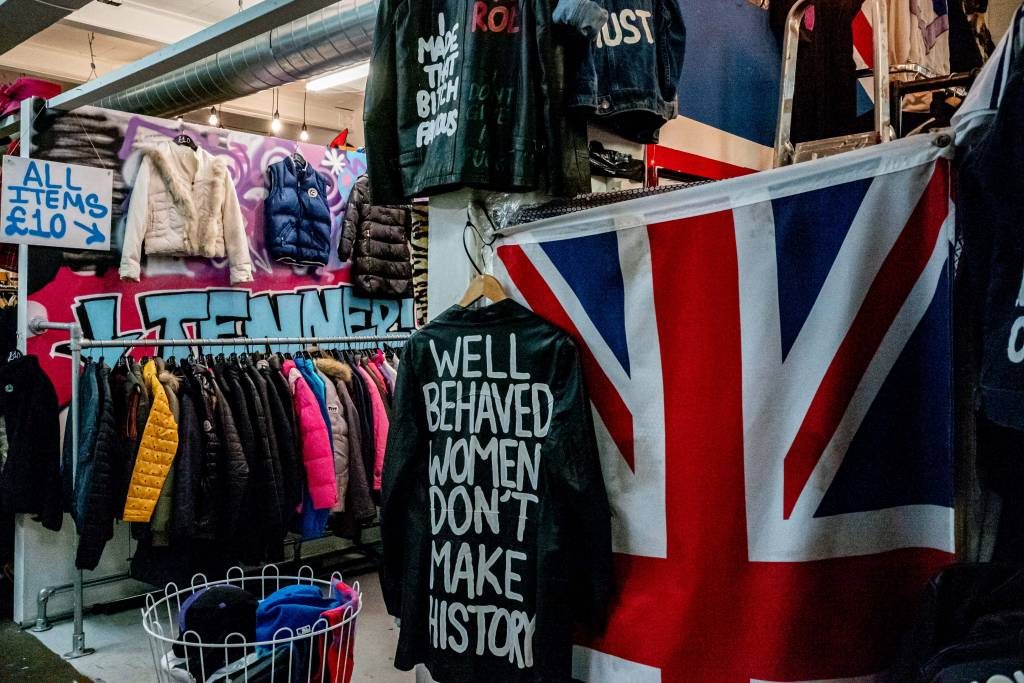
In low light you can still leave the Summaron at f/8 and let the ISO take the strain. All these shots were taken at 12,500 ISO
Cute or what?
Above all, the latest Summaron is cuteness epitomised. It turns the M10-D into what I consider to be the best-ever camera for street photography. Eat your heart out, Eric, this is the real McCoy. And it even has a viewfinder.
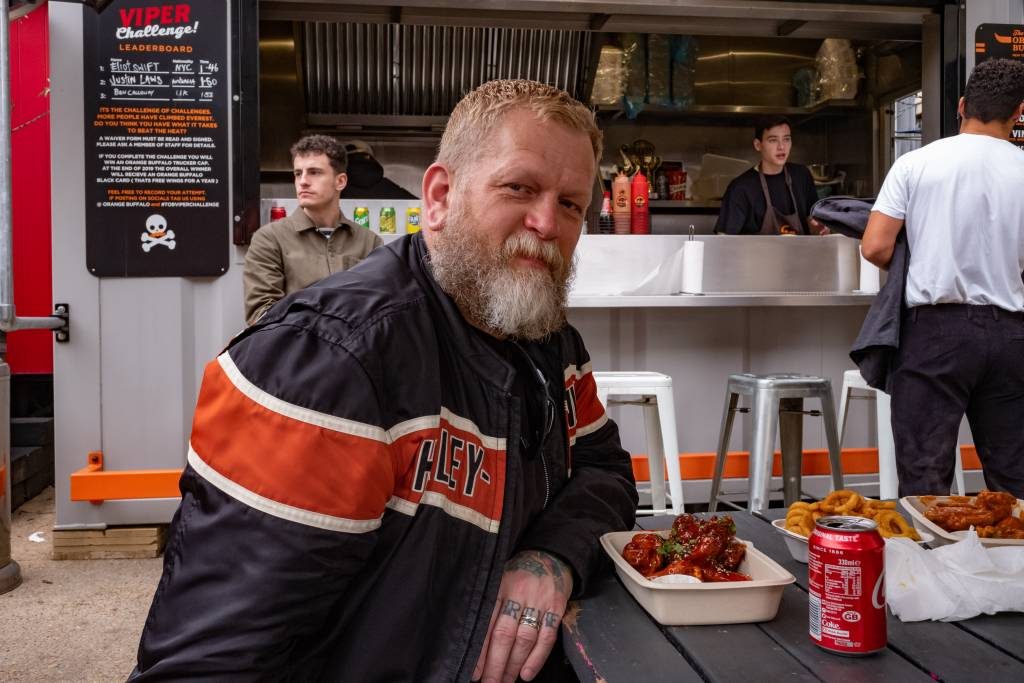

So there we have it. The Leica M10-D and the newly wrought 28mm f/5.6 Summaron is the perfect kit for street photography. Discuss. You are at liberty to disagree, as I am sure you will. Constructive comments appreciated.
And what is your ideal walk-around camera when travelling? Let’s hear your views.
Some Prices
- Leica M10-D – £6,490
- Leica 28mm f/5.6 Summaron – £2,095
- Leica Q2 – £4,375 (some still at the old price at Red Dot Cameras). New price £4,500
- Fujifilm X100F – £1,169
- Ricoh GR III – £799
Related articles
- Leica 28mm Summaron introduced
- Vintage f/5.6 Summaron takes to the Welsh borders
- Summaron f/5.6: Little old guy does modern
- Eric explains why the Ricoh GRIII is the best camera. Period.https://erickimphotography.com/blog/2019/10/21/why-ricoh-gr-iii-is-the-best-camera/
Subscribe to the Macfilos mailing list to receive one message at 8 pm London time from Monday to Friday with links to our latest articles. Your address will remain confidential and will not be used for any other purpose. Every email contains an unsubscribe link so you may cancel at any time. We hope you will join us in helping make Macfilos more popular and relevant to our readers.
- Messsucher (Mess-sucher), means range-measuring viewfinder in German and it was adopted as the designation of the Leica M series, starting with the M3 in 1953/4. Previous screw-thread Leicas had featured two windows, one for range (Mess, measure) and one for composition (Sucher, viewfinder). ↩

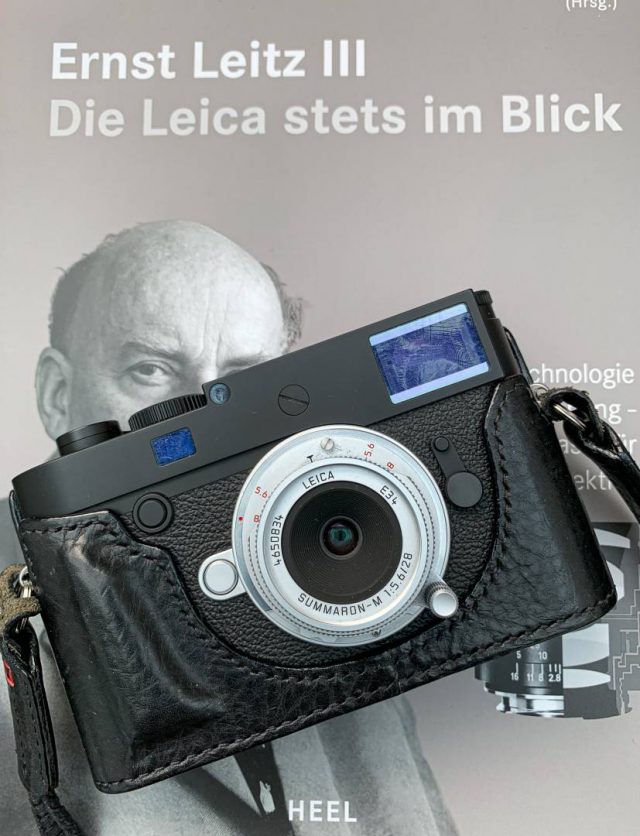
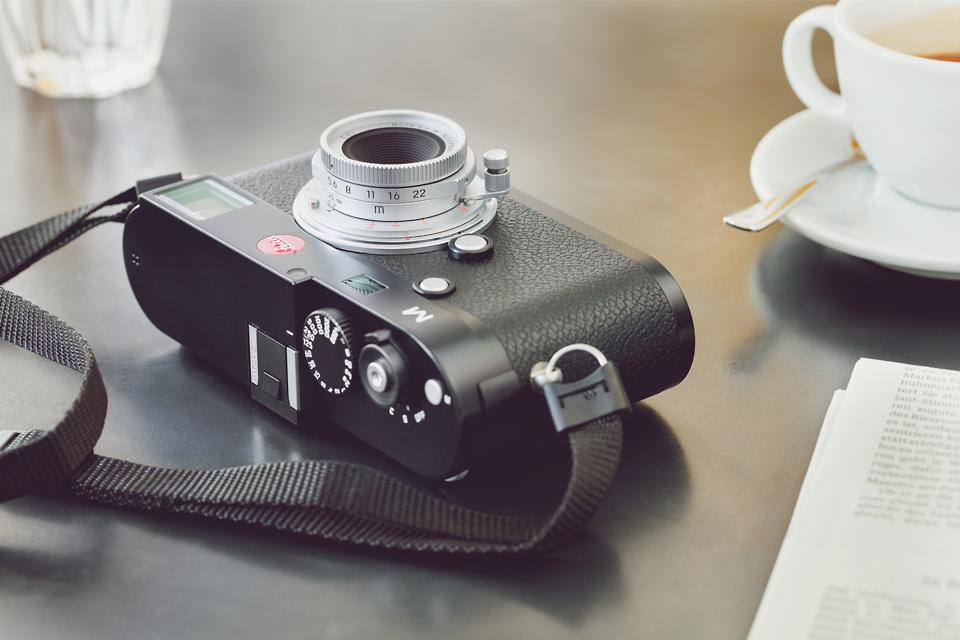






Nice to see this thread pop back up again. I’ve been thinking more about “street” photography and how it may have changed since the arrival of Covid.
With Covid around and people wearing masks, taking street photos almost seemed furtive, like spy photography. If you’re old enough you can hear a zither somewhere out there…
But I wondered recently whether the trick is to slow down, find a spot, (bring a folding chair to sit in?) and just wait and wait for something to develop. I’m no fisherman but this seems to be what fishing is mostly about, waiting for something to happen. Some days it does and some days it doesn’t.
We probably all know of places where we could sit/stand and wait for something to happen. And maybe that ability to slow things down is the key.
Isn’t that what HC-B used to do?
Exactly or similar. Don’t know whether he had a chair though!
Fascinating article, Mike. I wonder why no one is talking about the Leica D-Lux 7. I don’t mind if it’s made by Panasonic in China. I have been using it for quite a while now and I find it excellent for street photography. The image quality with the micro four thirds sensor is amazing. The sensor is not the largest around but the size of it gives me that extra depth of field that is sometimes so necessary in this kind of photography. I only wish the Leica D-Lux 7 were weather-resistant, but I am very satisfied and will keep it. It’s very good to hold, beautifully designed and has very good looks, and the aperture ring, the shutter speed dial and the exposure compensation dial are great.
Thanks. We have covered the D-Lux models in detail in past and I am open to articles from contributors. However, I don’t own a DL at the moment, so I have no new material to work with.
Cant believe not eveb mentioning the leica x typ113 or the fuji xpro..even the sigma fp is discreet…i think the article needs a update
Why we make street photos seems logical to me.
I have always used B&W film, well, since I was 17 .
every roll has been proofed and filed in binders.
In my dotage I often sit with a binder and look at the proofs.
Most have not been printed larger. My memory is jogged and my past life is brought to life by these tiny rectangles. I remember that event and what went on around it.
My note books of necessity were brief when I travelled but the photos fill in the blanks.
I made Kodachromes and later Fujichromes, but it is much harder to look at those.
I continue to use tri X and always proof the film.
Great article and comments. I’ve been on an oscillation through camera equipment since 2005. I really enjoyed my first Leica m6 and 35mm summicron (various versions) for about eight years, but sold it because I was frustrated with scanning negatives. With the proceeds I bought a Ricoh GR, RX1R and eventually a X100f. All ok, but the Ricoh was always with me and the other two were sold. X100f has too many buttons and the Rx1r was like taking photos with a thermostat, although the pics looked great.
I purchased an M-D 262 in the belief it would be my long term camera along with a mk2 ‘cron. I was very wrong! The pictures were sublime, but because it was worth so much I was reluctant to take it out when I was busy with other things. I’ve bought a beaten up m2 as my film Leica, kept the 35mm Cron and still have the original GR and now the II and III. Amongst this there have been others, but hopefully others will sympathise… i’d Also add the 28mm f2.8 canon lens as a Summaron 28 alternative- my next target for the m2.
Glad you liked the article, Ian, and thanks for adding your views.
I am not a street photographer although I walk the streets to make photographs. If I do want to photograph people in the streets “street photography”, the camera that makes me invisible is …
Rolleiflex 6×6 TLR with Waist level finder.
It is the WLF that makes me invisible as instead of raising something to my eye, I am looking down at my box. This works with Hasselblad too, where a 50mm is a lovely wideangle lens but the 120mm is great for a closer view of the subject.
Playing catch up. An X Vario derivative. Full frame, sized as the Q, with an EVF and a small zoom say 28-70. The relatively slow aperture not a problem. Interchangeable lenses. L mount probably. Please send request to Wetzlar.
Thanks, Frederick. For most of us, who don’t aspire to being masters of the art of street photography (whatever that is), our photographs tend to reflect what we do and where we go — a personal record of places, scenes and people. For me, it is often an adjunct to my written journal, a visual reminder of where I was and what I was doing on a particular day. I also find pleasure in selecting the right tools for the job and, of course, discussing the cameras and lenses. Some, I know, treat the gear as unimportant in the general scheme of things. Others are interested. I suppose it’s a bit like a car — is it just a tool to get you from A to B or is it something you enjoy using and can take pride in ownership.
To a degree I am with David B. Anonymous people in anonymous places are not very interesting.
But, there is a rubbery line between “street” and social history, e.g. “Do Not Spit” (1906) by Harold Cazneaux, “The Meat Queue” by Max Dupain (1946), “52 Suburbs” of Louise Hawson (2011) and then, me and the head prefect walking down to the tram stop in Market St., after school – snapped by the ubiquitous Leicagraph, IIIf perhaps or earlier – all “Good Heavens! Did we look like that!” Perhaps there is a vicarious pleasure in looking over our neighbours’ fence.
A recent survey here in Oz recorded that sporting shooters (wild ducks, rabbits, feral pigs etc.) were a very well adjusted and generally happy group. I hope photographers are much the same.
Thanks for the item and the photos.
I love doing street photography and have enjoyed using a range of options. My favorite option is my recent purchase of a new Leica M-E (typ 220, yes, the ancient but gorgeous ccd version) and a mint 28mm f/5.6 Summaron. I love the rendering of the pair and shoot at f/8 with the focus preset for the huge depth of field. I also generally do not shoot above ISO 800 for daylight street photography so this is my perfect combination now.
As usual late to the party. Lots to say – but street photography for me as an architectural and urban critic and historian means everything in and on the street – including humans and animals to give scale and animation. Facades – wise angle preferably without people or traffic. So the CL and its 18 or the new Sigma 45 or of on a special mission – article or lecture – then it’s the 11-23 TL. For very special occasions it’s the Nikon Z7 with the Zeiss Milvus 18/2.8 – half the weight of the SL. Although the aforementioned Sigma has brought my SL to life again.
Look out – here comes Mr Nasty!..
First of all, I have to say that “street photography” – photos of assorted strangers for no apparent reason – seems, to me, pointless.
I think it evolved from a misunderstanding: Cartier-Bresson (whom Mike alludes to up at the top of this article, lurking “..for hours at the top of a spiral staircase waiting for a random cyclist to pass your line of vision. Or, perhaps, muse while loitering next to a puddle expecting some unfortunate to be forced to skip over at any moment”) took photos mainly outdoors in the street because ..that’s where there was sufficient light to take photographs! (Think ISO 12.)
Before him, Eugène Atget took photos in Paris streets (..but with a much bigger, slower-to-use camera!) ..and thus a ‘tradition’ was born: wannabe famous, or ‘accomplished’, photographers took “street photographs”. The original reason was ..that’s where there was enough light to make photos. Simples.
But why? What d’you get from “street photography” ..just shots of strangers to which the photographer then gives some kind of indeterminate ’value’. I just don’t get it. Whatever is expressed by these photos about what the individual photographer had in their head?
I don’t include Matt Stuart among “street photographers” because his photos, in mainly London streets, are meant to have – and DO have – an essence of oddity, weirdness, comedy, juxtaposition. They’re not just snaps of odd people passing by; they are surreal moments ..like the boy spinning in mid-air outside the National Gallery ..which is what Cartier-Bresson was after, too, having started as a Dadaist painter.
Anyway, if I’m out and about, and I do want a camera with me, it’s not going to be a big SLR, but probably a small Sony pocket cam, like the RX100 Mk VI. It has a rear screen, a pop-up viewfinder, it’s silent, it has an 8x zoom (24-200mm equivalent), and a ‘one inch’ sensor ..perfectly OK for outdoor photos, and not too bad in low light, either. It shoots great video, too. (I used to like ..we-ell, still do.. the small Nikon P7700, but as they age they become unreliable, and they keep switching by themselves between assorted settings – awful! But a very sharp zoom lens!)
But what would I want to shoot in a street ..and why? Shopfronts? Passers-by? If I want a picture of, say, a Chelsea Pensioner, then I’d go to where they live, and ask if I may take a photo. Architecture? ..I mean, Leadenhall Market? ..Then I’d take a camera with a very wide lens on it; 18mm or 21mm, or equivalent. Bric-a-brac stalls on Portobello Road? ..then again, a wide angle (..and by “wide-angle” I mean 24mm at the longest).
I’d think beforehand WHAT pictures do I want to come back with, and WHY? And from those thoughts, I’d choose what to use. People eating Chinese food in London’s colourful Chinatown? ..Then I’d use a wide aperture short tele lens, to pile-on the foreshortened perspective, and deliver views through restaurant windows with just faces in sharp focus: to convey colour, busyness, intensity, ‘dense’ perspective, steamy surroundings.
Street performers in Covent Garden? Short tele, but not especially wide aperture, allowing their surroundings to show up as more than just a blur, and to put the performer(s) in context.
Caricaturists in Leicester Square? A wide-angle lens (19mm? 21mm?), and get in close, to have both the drawing and the customer; intensity and likeness.
But what am I going to do with all these pictures? Why would I take them in the first place? What do they show that’s MY own take on what I’m seeing? What am I trying to convey to other people, rather than just taking a straightforward record of what’s going on around me? What’s the point?
Most of the pictures which we’re used to seeing were taken for a REASON ..HCB took photos to publish ..and he was commissioned to take photos, as were Don McCullin, David Bailey (the other one), Bert Hardy, Robert Capa and the other Magnum photographers, Norman Parkinson and many more press photographers and advertising photographers. Some photographers have taken photos to exhibit ..Martin Parr, say, and then have got commissions on the back of their shows. Bill Eggleston took photos just for himself, and then took them to an art gallery, and the curator John Szarkowski took a liking to them and gave him an exhibition ..and fame followed.
Thorsten Overgaard takes photos in order to illustrate his website and thereby get people to buy his courses. That’s his reason for taking photos. And he makes a living out of it. But why would I want to take photos of random people in streets without a REASON?
I take photos which convey a feeling ..like peacefulness, oddity, an interest in a colour or combination of colours or intensity of colours (I’ve been influenced by Jay Maisel, I think), or simplicity, complexity, aloneness, activity. Just a photo of a place, with no added feeling or intention seems, to me, pointless.
So I don’t take generic “street photographs”. I do take some photographs in streets here and there, but mainly I take photos in lifts, living rooms, art galleries, at the seaside, at business or personal events, on boats, in particular places (cinemas, hotels) or at particular times (dusk, or midnight).
I remember walking along that spiralling, kilometres-long avenue of orange arches in some temple garden in Kyoto, but to just take a photo of orange arches would have conveyed nothing. Then I saw a girl fling out her arms in front of her boyfriend who was taking a picture of her ..and >SNAP!< ..I had a picture of joy! I’ve taken pictures of deserted beaches, conveying solitude. I don’t take photos to be simple records of places ..I take photos to stir feelings in the minds of people who – later – see them.
It took me many years to discover WHY I take photographs, and what kinds of lenses suit me, and whether to use black-&-white or colour. But I discovered that it’s 21mm or wider, vivid colour, for the conveying of feelings, ideas, thoughts and emotions.
[As for the comments above about smartphones, I always have an iPhone 6sPlus on me (as it has video stabilisation built in, as well as my diary in it) and I have a little smaller-than-a-golfball great quality ’Moment’-brand 19mm-equivalent clip-on wide-angle lens in my pocket, too. Always.]
Something about rain and party here…. I am sure you are right, as always. It all goes to prove that it is a case of each to his (or her) own. We all tend to do what pleases us individually in the end.
Oh dear ..I was hoping to provide a bit of inspiration. Bad David. Back in your box!
I liked your comment David, you appear to be a very strong ‘street photographer’. I found it inspirational anyway.
For me my street photography works when I think I can see elements of a story coming together in the frame. I’m inspired by the shower scene in Psycho – here’s why – it has the elements of the story, but Hitchcock invites you to finish the story yourself – the mastery is YOU the viewer then have ownership of that story – you narrate it for yourself. Now if only I could do that more often!
Bingo!
I’d love to hear what you think of Christmas…
“It took me many years to discover WHY I take photographs,”
You’ve probably answered your own question when you ponder on street photos being worthless. If people are practising and learning what they like, how they like to shoot then that’s far from pointless.
And I’d add that photography is meant to be fun.
Fun is important. Most of us take photographs because it is fun. It’s a combination of choosing the equipment, bonding, making pictures and enjoying some, if not all, the results. There doesn’t have to be an objective such as making money or winning prizes. If we get satisfaction, that’s all that really matters.
Well, Garry Winogrand just wanted to see what something looked like photgraphed.
But aside from that, even though I am a bit nervous about walking up to people and snapping them, which I avoid. I do enjoy walking and snapping, I treat it as a sort of walking meditation, and then I have to develop the film sometime later. Also whilst in that groove, you see far more than just walking and internalising thoughts.
But I agree, most of the time the output is unremarkable, so what, it was the process that mattered, and SSD is cheap.
An excellent article Mike and great photos with the summaron. For streets my preference goes the 10 years old ricoh grd 4. You can shoot anything you want starting at f1.9 with the small sensor and you have in-body stabilization which is great for shooting from the hip when walking. Your sony rx 100 may be a good contender if you keep it around 24 or 28mm equivalent as well or any 1inch sensor.
Thank you, Jean. I can see the attraction of the Ricoh and that also extends to the GRI, II and III. But see my reply to Stephen J – there is currently a cloud over my Ricoh. One feature of the Ricoh which I like is the snap-to-focus. As far as I know, it is a unique feature of the Ricoh GR cameras. With snap-to-focus on and set to, say, 2.5m and the aperture set to f/8 or f/11, it has a rather magical trick. Half-press the shutter in the normal way and autofocus kicks in. But press the shutter once, without stopping halfway and zone focus happens – happily at 2.5m as pre-set. This works really well and gives you the immediate option of snapping away or taking a more focused picture. In many ways, it is the best form of zone focus. Sorry my GR has given up the ghost for the second time. I think it must be a loose connection inside, but not worth having it repaired.
I’m fully aware that ricoh GR cameras may be unreliable and may die instantly without any warning. I knew the weakness when I decided to buy one. I must have been lucky but still I always have a back-up (or two) when travelling with a GR. I’ve read Eric Kim’s article on GR 3. I wonder how he can say this is the best camera ever, period. The GR3 may be worth a try but I’d pick a summaron + a used M 240 or M 10-P anyday.
I have always kept the GR as the sort of camera that I can throw in a case as a backup. I learned many years ago that taking just one camera can lead to problems — breakdown, loss and so forth. But I do worry about Ricoh reliability. The X1 and X2 seem to be totally reliable, despite their age, and, of course, the Sony RX100 IV is also a good take-as-well camera. Currently, I am using the M10-D and the Q2 almost exclusively. I seldom choose the CL and sometimes wonder why I keep it and the TL lenses. As someone once said, it’s all part of life’s rich pageant.
Apart from the obvious smartphone which makes the photographer invisible as everyone has one? Zone focus is the only way to go. It was used in the good old days by many of the great photographers, HCB, Winogrand etc. Messing around with rangefinders and autofocus is for wusses. The ultimate street camera in the good old days was a Leica Standard (no rangefinder) with a 3.5 cm f4.5 Snapshot Elmar, which had but 3 focus positions. It had a flattish shape which the youth of today would call a ‘pancake’. Very few of them were made and they are rarer than hen’s molars. The price is commensurate and the aforementioned combination would probably cost in excess of $20,000 in good condition and over $30,000 in ‘minty’ order. Expensive, but you would be buying a legend.
Tongue out of cheek, a smartphone looks to be the most attractive combination in the right hands.
William
But, as a Yorkshire friend once said (in relation to fish soup, not smartphones), “I can’t abide smartphones”. They are ok in an emergency, but I find holding a thin bit of phone up in front of my face less than comfortable and not conducive to photography. I like something more chunky, read Ricoh GR, Leica X1 or Leica M-D….. I will pass on the Standard with Snapshot Elmar, but I can understand the attractions. The rig I talk about in the article, with the Summaron, is perhaps the modern equivalent.
From memory Mike, my Leica III with the Voigtlander Snapshot Skopar mounted made great pictures and it was small (but heavy). I guess one of those with the ltm version of your Summaron would be a nice combination. (But heavy)
Yes, agreed. It occurred to me as I was writing another reply, that my IIIf or even IIIg would work well in street snapshot mode. I haven’t used my LTM cameras as much as I ought to have done because I find the two window set up awkward and difficult to focus. But, as William says, many users relied on zone focus.
I have the 28mm Summaron in its original 28mm guise, even wrote an article about it here. A hood is essential as getting fingers in front of the lens is a possibility that borders on a probability. For those who would go wider, the Voigtlander 21mm f4 is another little gem. I bought one in Heidelberg last year and found it instantly satisfying. It costs less than a quarter of its Leica equivalent. It is ideal for zone focus.
As for the phone business, it is always with you and most of the photography on the planet on and off street is now done with these. I agree with your point about holding on to a thin sliver of metal. I find that an Otterbox cover works wonders and there are also little disks that stick out of the back that might be used as holders. I am myself naturally awkward when it comes to handling various items and I can easily get my fingers in front of a smartphone lens. In case you think that I have gone over to the ‘dark side’, I usually carry a ‘regular’ camera when I am engaging in ‘intentional’ photography. The phone has to do when I am doing other things and I see a photo opportunity.
William
As you know, I bought the original 28mm Summaron at the Photographica Fair a few years ago. I got it because I had heard that a retro version was being made and I assumed this would push up the prices of the old lens. I was right, and couldn’t resist a 100% profit as soon as the new lens was announced. Maybe I regret selling it because it has probably appreciated more now. I now have a principle of never selling an M lens unless I need the money.
Most days whilst out walking I have three cameras, the iPhoney7, the Ricoh GR (battered), and my new(ish) M-D.
The camera that I use most, probably at least twice as much as the other two is the Ricoh. Amazing really because I used to really dislike it, I gave it to my daughter who hated it and she gave it back to me. It seems to score well on all fronts, it has fast auto focus, but also has the ability to set it to snap focus at say 2.5m, just like your M-D/Summaron coupling.
My M-D usually has my W Nikkor LTM 50mm F2, which is basically a coated Sonnar from the 1950’s which I absolutely love, even though I can barely see the markings on the barrel. I think it looks nice and it has framelines for 50mm in the viewfinder, what is more it is a legend in its own lunchtime it being used extensively by the recently deceased David Douglas Duncan in the Korean war, thus making Nikon a household name in America.
For the miniaturists though, I have an old Leitz CL and that sports the 40mm Summicron, which is probably the most underrated lens that Leica have produced, Leica hate it, even though they designed it. If I want to take landscapes I usually put that lens on to the M-D before I go out. The slight fly in the ointment being that there are no 40mm framelines on any M camera, so you have to guess.
That lens must be the next smallest that Leica have ever made too… I measured it at just under an inch as I wrote this, and its a Summicron so F2.
Anyway… Ricoh it is.
Funnily enough, following the legwork for the above article I decided to get out the Ricoh GR for a little fling. Some months ago it went dead on me and I paid £15 at the local camera shop to have it checked out. When it came back they said there was absolutely nothing wrong with it and, indeed, it was working. So I took it out again this week and it was still working. Then, later, I tried to switch it on and it is again dead as a dodo. Nothing I can do seems to put it right. I think I wrote an article about this last time it happened. Anyway, while I had toyed with the idea of part-exchanging it for the GRIII, I will probably skip on that. If it doesn’t spring to life again anytime soon I will write it off as the only digital camera I have purchased that has completely died on me, a complete write-off. Of course, as a GR1, it isn’t worth all that much, but it’s annoying. In working condition, it would have been worth at least £100.
The Leica X2 or X1 isn’t much bigger and also works well in zone-focus mode. You also have the advantage of being able to see aperture and speed displayed on physical dials. I’ll take one or the other out for a bit of a play, but the M10-D does a fine job and I can’t see a better hole to go to.
Guess what Mike, I have recently had similar issues with the Ricoh and have vented it through Ebay.
No longer a Ricoh person.
As you know, I have been a big advocate of the Ricoh GR. But my GR is currently sitting on the window ledge as an expensive paperweight. To recap, for anyone who is new to this discussion, my GR one day stopped working. Despite changing batteries and, even, charging via the USB port, it was completely dead. It was out of warranty, so I took it to my local camera dealer who said they could send it to the repairer for a quote. I had to pay £15 for the quote. The camera came back, they said they could find nothing wrong with it. Sure enough, it switched on and I put the whole thing down to some silly misunderstanding.
Then, a couple of weeks later it went dead again. Nothing I could do would bring it to life. I did some research on the internet and discovered that this is a known problem, something do with the cable connecting the on/off switch. The camera is out of warranty and, in view of the value (about £150) it isn’t worth repairing.
This is the only camera I’ve owned in the past 30 years that has completely failed. So I’m not planning to buy another Ricoh.
Fine article, Michael, with some excellent street photography.You also ask the right questions.
As an extremely modest street photographer myself (with much to be modest about!) I must however speak up for the Fuji x100F even though I don’t own one. I have ambitions to do so which has meant so far reading twenty six reviews.
It is rare to read such a comprehensive list of praise from such a trawl of professional users and reviewers. Of course there are some negative comments but these are normally minor points as suggestions for the next model. There appears to be no fundamental weaknesses exposed in what is seen as a five star camera for street photography and worth every penny of its price.
As a Fuji enthusiast myself, perhaps I would champion the X100F any way but professional users and reviewers do so far more effectively than I.
Much as I would love an X100F, I am aware that Fuji will probably release the XT4 next year and I shall probably trade in my XT2 for one. To buy an X100F successor (also due next year) as well may prove a bridge too far for the budget!
Thank you for your kind words, David. There is absolutely nothing wrong with the Fuji X100 series as far as I can tell — at least, nothing that would stop me buying. If I were in that parallel Fuji universe I would be using one and, no doubt, extolling its virtues. On price, of course, there is no comparison. The X100F is far more affordable and approachable than the rather extravagant Leica setup I highlight in the article.
I own an X100F . It is a very good camera that is just fun to use. I’m possibly one of the rare users who shoots with the optical viewfinder more than the EVF, figuring that if I shot with the EVF all the time then an X-E3 would have been a more sensible buy.
Of course, that brings us to the fly in the ointment. I often ponder whether I shouldn’t have spent a bit more and bought the Xpro2. Coupled with the F/2 23mm ‘fujicron’, it would fit beautifully into Mike’s street photography frame. And it has one key advantage that I think the ideal street photography set-up should have – weathersealing. Given the best street photogs seem to reinforce that patience and water produce great street photos……..
I’m watching the xpro3 with interest. The changes to the rest screen seem both an advantage, and a hindrance.
A worthy alternative to the Q is the Fuji X-Pro2 with the 16mm f1.4. About the same size, a bit lighter, with very fast autofocus if you aren’t zone focusing, and cheaper. Of course it’s not as stealthy as some of the smaller options, but as a travel camera, it is more versatile.
Tone down presence would gain from using a black version of the 350mm Summaron lens on a black M10. Is such available?
As much as I love my M and Leica glass, I usually take my CL on to the street with a pocket full of small manual lenses, usually Voigtlander 21mm f4 and 35mm f1.4 and occasionally for a bit more reach if needed the Zeiss 50mm f1.5. I have the Elmarit-TL 18mm f2.8 ASPH but like to zone focus.
I find the CL/21mm combination reasonably discrete, particularly if used with some tape over the logo in the less salubrious areas.
See my reply to Le Chef. I agree.
One of the challenges of street photography i.e. people, is that cameras are seen to be intrusive. There’s a zone where people are aware of you and naturally seem to shy away. You have a choice: engage them and get tacit permission to photograph, or simply walk away. At a longer distance you become a “sniper”, closer in you and subject have to fully engaged which to me makes it more like portraiture. I believe there’s a difference between flat observation and being interested in what you are taking in which gives you a sense of anticipation and if lucky a decisive moment.
My CL and the 23mm lens setup aims to be unobtrusive. It forces me to think on my feet to find better perspectives and to engage without threatening with a long lens. It’s light and easy to carry, can function in low light with reasonable ISO, and it’s just about Barbour pocketable inside what I call the “dead wildlife” pockets.
I’m intrigued by an X100F but see more advantage with my CL. I’ve yet to try an M, but like the idea of “mechanical” controls that can be set with the camera off. Likeliest is that I stick to the CL and keep using it to achieve a state where it’s just intuitive and not a thing to be fiddled with.
I also think the CL is a nice size and makes a good street camera. I prefer the 18mm pancake simply because it is more compact than the 23mm and I don’t need the wider aperture for street photography. On the other hand, the advantage of the Fuji and the M is that you can see at a glance what your settings are. With the CL you have to keep an eye on the aperture in that tiny top screen. Also, manual focus is less easy to set than when you have a clearly marked focus ring. I usually lock down the CL after setting the main parameters, in which case it does function just as well as the M or the X100.
I set my x controls with the camera off, as the two dials on the top plate allow that. Saved me a few times when I preset them before I leave home, f8 and auto shutter. Works a treat on the street. 😀
My X typ 113 is a 35mm equivalent and I love using it. I also loved my limited experience of the 35mm summicron attached to the M10.
However I’ve found on occasion the 50mm on my Df can be useful, brilliant for portraits and being close up with people, but sometimes lacks enough width. I have no plans to put a 35 on it though, as I’m experimenting with slightly wider than that for landscapes/seascapes.
My view though is that you have to be in the right place and with something to shoot – and it doesn’t matter what your focal length is provided you have the shot in your camera.
28mm Elmarit has become my go-to. Traded my Q-P after picking up this lens, which happily bounces between my MD-262 and M6 Classic. Long-term—if not lifelong—posse to make photographs and chase the light!
Jonny, the Elmarit is almost as compact as the Summaron and will do the same job as you say. It’s cheaper too and gives you a couple of stops of extra light gathering in emergency. Good choice.
Agreed, Mike. Though I admit I did hold the black chrome Summaron longingly in my hand before ultimately choosing the Elmarit! Really enjoy this blog, keep up the thoughtful content!
Thank you Jonny and thanks for your continued support. Mike
The Lumix GX-85 with the amazingly good PanaLeica 15/1.7 is my poor man’s equivalent to your Leica M10-D with 28/5.6. A great article with wonderful sharp street shots.
Thank you, James. You are right on there…. the GX-85 or GX-8 with the Leica DG 15mm is another ideal setup. At the same settings I used — f/8 or f/11 and zone focus set to 2.5 meters — it will work in exactly the same way as the M10-D and Summaron. It’s also smaller and lighter (not to mention a bit cheaper) so it’s a perfect combination. And, of course, you have the advantage in that the depth of field is even greater with M4/3, you have the massive DOF of a 15mm lens with a 30mm-equivalent focal length. What’s not to like?
I’ve found that having a Panasonic GX and a Leica M, I’m covered for street, studio and travel situations. For the micro 4/3rds, the 12-60mm zoom is another great option.
I feel lucky that I have my Leica X’s and my GR2, I know I am not any great shakes at this photography game, but I have what I consider fun. I don’t know if I could handle an M, maybe theQ, not the Q2, like my d850 that I got rid of, the damn beast was too heavy but just wonderful at resolution but files way to big. In all sincerity I have to say even more so I like reading Macfilos than any other site. The contributors and commentators must have the most experience of any site. Thank you to all who contribute.Keep my education going.
Thank you, John. But Macfilos wouldn’t be anything without people like you who have been supporting the site for years and making useful contributions to all the discussions. Mike